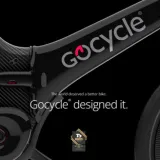
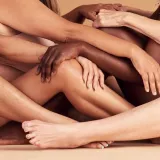

PREP, PRIME & PIN: WHY PINTEREST’S THE PERFECT PLACE FOR BEAUTY BRANDS
Bigger baskets. More sales. Pinterest's having a moment - find out how your brand can take advantage

2022 was an interesting time for many brands. In the wake of COVID, they’d seen online sales boom as the pandemic forced consumers and brands online. Unsurprisingly, 2020 and 2021 saw significant growth in online sales, with brands of all shapes and size reaping the benefits of lockdowns across the world. But the good times wouldn’t last.
It began with Apple’s notorious iOS14 update in summer ‘21, which greatly reduced brands abilities to track and target Apple users. This had an inevitable knock-on effect, and businesses could no longer rely on their Meta campaigns to deliver the same sort of results. This was of course confounded by the events of 2022: the Russian invasion of Ukraine, October’s mini-budget in the UK and of course, rising energy prices and the cost-of-living crisis. All of which put the squeeze on consumers’ wallets and left brands searching for more effective, sure-fire places to spend their ad dollars, and where they could be more certain of seeing a strong return on their investment.
Enter Pinterest. Higher purchase intent. Bigger basket size. More engaged shoppers. Pinterest is having a moment. In fact, while ads on the likes of Meta were delivering ever-decreasing returns (something we’re pleased to say the platform seems to have arrested since the end of 2022), over the past few years, Pinterest has been delivering fantastic results for brands, especially those in the health & beauty space.
But, is your brand ready to take advantage? With its highly engaged audience of beauty fanatics, the platform should be a no-brainer, but for many brands it’s an often overlooked channel. In fact, it’s a fairly typical scenario for us to encounter a client who dipped a toe in Pinterest years ago, and hasn’t revisited the platform for a long time. And with more than 6M beauty-related searches each month, that’s a lot of wasted potential.
Firstly, let’s start with some numbers. First conceptualised back in 2009 as an online replacement for shopping catalogues, today Pinterest boasts more than 445 million monthly users – if it were a country, it would overtake the USA as the third most populated country in the world! Each month, there are over 5 billion searches on the platform and 6 billion new boards created (if you’re new to Pinterest, boards are a sort of online mood board, where users can collect and collate images and ideas).
But what makes these numbers so important to brands? Well, as mentioned earlier, users on Pinterest are significantly more likely to make a purchase than those not on the platform – and this propensity to purchase becomes even more pronounced among beauty lovers. So, what is it about the platform that drives this higher purchase intent?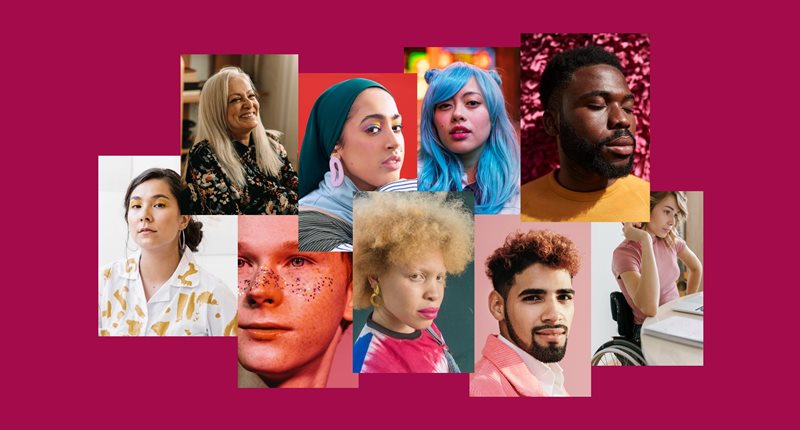
The Pinner Mindset
Well, it’s all about the unique environment Pinterest creates, combined with the unique mindset of Pinterest users.
It’s a platform where users don’t zone out, they lean in. They aren’t on the platform to doom scroll or fend off ‘FOMO’. Unlike other social media, the platform’s not about news, memes or dance crazes. There are no pictures from the past. In fact, it’s where people come to plan for the future.
It’s all about going from idea to “I did”.
Users are here to plan what’s next, their next project. That could be a home renovation, a wedding, inspiration for a new hairstyle or simply just how they might want to do their nails for the weekend. It’s about discovering new things, saving new ideas and, most importantly, making their next purchase.
A BETTER SHOPPING EXPERIENCE
65% of pinners say they come to Pinterest to shop. This engaged action-orientated mindset is what makes Pinterest such a valuable platform for brands and advertisers – there’s a natural, genuine alignment between what people are on the platform for (ideas & inspiration), and what brands are doing (helping them find what they want and act on it).
On Pinterest, users come to Learn, Try, Make and, ultimately Buy.
And because users on Pinterest are eager for new ideas, this means that, unlike other social networks, they actually want to hear from your brand. In fact, on Pinterest, there’s no need to worry about ‘authenticity’ or appearing native because content from brands doesn’t interrupt – it inspires.
In fact, 83% of pinners say they’ve made a purchase based on content they saw from a brand on the platform. And it’s this unique mindset that drives the higher purchase intent we mentioned earlier, with users almost twice as likely to take a shopping action on Pinterest vs. users on other platforms, meaning shoppers here have 30% bigger baskets too!
But all that shopping? It starts with a plan. In a world of direct-response, click-to-buy, ‘shop now’ buttons, consumers still respond to the unexpected, and that lends itself to the Pinterest platform, built on discovery and inspiration.
We know from our own Future of Beauty research that, given the choice, most people would still prefer to shop instore – because shopping has always been about more than just what you buy. The experience is so important, a moment of inspiration vital. What makes Pinterest such an effective channel for driving sales is that it manages to take the best of shopping offline and brings it online -making it easy for people to browse, consider and spend more, without pressure. Just like they would in real life.
PINTEREST & BEAUTY – A PERFECT MATCH
Because of the visual search nature of the platform, Pinterest and beauty brands go hand in hand. In fact, with 6.5M monthly users in the UK alone, beauty is one of the platform’s top sectors, with beauty searches continuing to increase, up 35% year-on-year. Breaking the sector down even further, we see the following monthly beauty searches:
- Makeup: 4.5M
- Skin care: 4M
- Hair: 4M
- Nails: 3M
And the benefits to beauty brands are clear – you’re 82% more likely to reach a beauty enthusiast on Pinterest vs. other platforms, while you’ll also reach bigger beauty buyers, with pinners purchasing 80% more beauty products vs non-pinners.
That’s not all - brands that advertise on the platform can expect to see 2.3x more efficient cost per conversion than if they were to advertise on social media, while retail brands can expect to see a 2x higher return on ad spend. So, with its highly engaged audience ready to shop, the power of Pinterest for beauty brands is clear to see, especially if you’re no longer seeing the results you’d become accustomed to on other channels. But don’t just take our word for it, keep scrolling for 3 Pinterest success stories. And, if you’d like to discuss your own Pinterest strategy, please do get in touch! Alternatively, we've also put together a guide to help brands get satrted on Pinterest, covering the platform basics and everything you need to know to start building your organic and paid strategies for the platform - you can download it here.
M.A.C Cosmetics:
M.A.C set out to drive awareness and consideration for their hero products, reaching users by creating looks to celebrate moments that mattered to them. They began by using Pinterest insights to identify the top emerging beauty trends and turned the data into bespoke editorial content that showcased their products in a new way.
This led to 2.5 point lift in pin awareness and a cost per click that was 57% lower than target.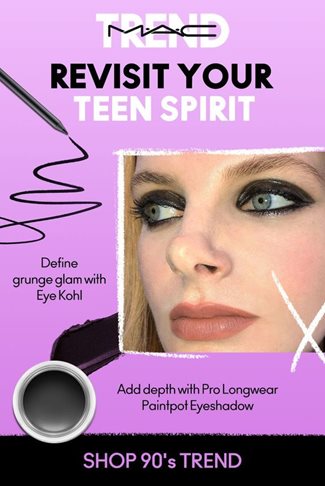

Guerlain Paris:
Fragrance & beauty giant Guerlain, turned to Pinterest to promote their new Rouge G lipstick to a targeted audience of high-end female shoppers.
By combining several ad formats— video, static, carousel and collection—with interest and keyword targeting, Guerlain increased brand awareness and consideration which led to a 14% increase in purchase intent and a 40% uplift in ‘add to cart’ conversions. They also recorded the most competitive CPM vs other platforms running the same types of creatives
Nip + Fab:
The skin care experts wanted to drive more revenue through their ecommerce store, but with the skin care market more crowded than ever, cutting through the noise was a challenge.
By helping them leverage the untapped potential of Pinterest ads to reach an engaged audience of beauty fanatics ready to spend, they saw their average order value increase by 11%, with a ROAS 24% higher than Google for the same period, and conversions rates hit 40%, an increase of more than 1000% vs Google.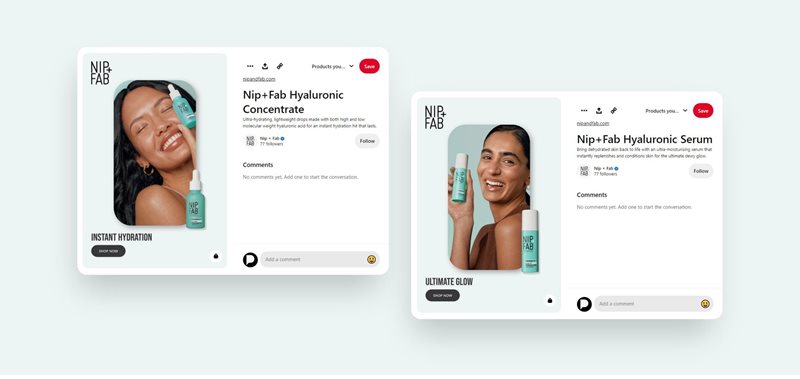
Posted 25 May 2023 by Ben Waterhouse